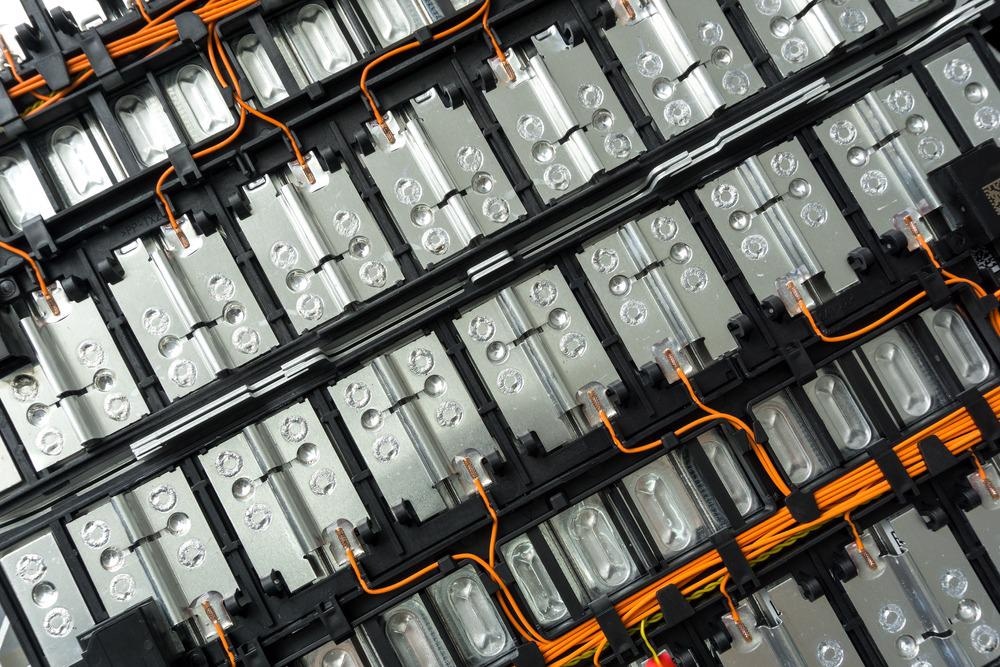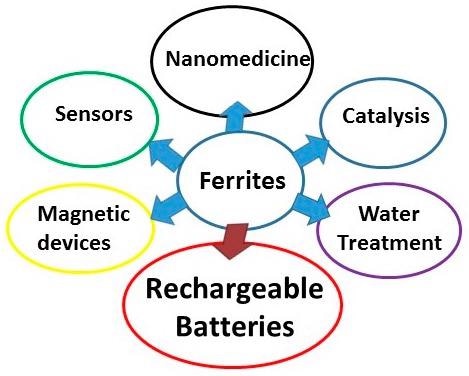A new synthesis method of ferrite spinels is discussed in the journal Applied Science, with the most attractive electrochemical results from ZnFe2O4, achieved with peculiar morphologies or as composites. Many applications are derived from ferrites such as nanomedicine and sensors.

Study: ZnFe2O4, a Green and High-Capacity Anode Material for Lithium-Ion Batteries: A Review. Image Credit: Smile Fight/Shutterstock.com
Ferrite and Its Broad Usage
The term ferrite refers to a group of ceramic oxide materials that are linked by the presence of iron ions and have been widely used during the previous five decades.
They are well-known and well-studied materials with an impressively broad range of applications ranging from millimeter-wave integrated circuit (ic) to electricity processing, simple ferromagnetic materials, and magnetic documenting catalysis, detectors, energy, and nanomedicine from magnetic nanoparticles to drug delivery, neuroimaging, and electrochemistry (for rechargeable ion batteries).
Ferrites are adaptable due to a unique mix of properties: strong saturation magnetization, high electrical resistivity, minimal electrical losses, and excellent chemical and structural stability.
Three Types Ferrites Category
Based on their crystal structure, ferrites are categorized into three types: cubic spinels with AB2O4 stoichiometry, garnets, and hexa-ferrites. The nearly infinite number of compounds that can be created is a major component in modifying their characteristics for so many various applications.
The ability to make ferrites in form of nanoparticles has opened up a new and intriguing research field with transformative possibilities not only in technology advancement but also in biotechnology. Garnets and hexa-ferrites have relatively complicated crystal structures. Hexa-ferrites are a class of synthetic chemicals that have hexagonal or rhombohedral symmetry and can form prolonged solid solutions.
Given the complex nature of the crystalline structure, the magnet structure of hexa-ferrites is exceedingly complex; their most notable aspect is their high coercivity. However, cubic spinels are by far the most well-known and widely used ferrites, and the term ferrite has become synonymous with AB2O4 compounds around the world.

Scheme showing some applications of ferrites. Image Credit: Bini, M., et al., Applied Science
Recent Attention on Zinc Ferrite
Zinc ferrite ZnFe2O4 (ZFO) has sparked increased attention in a variety of sectors in recent years, including nanomedicine, with potential applications in magnetic hyperthermia and electrochemistry, as well as as an anode material for lithium-ion batteries (LIBs).
The most promising methods of synthesis for creating pure or composite/hybrid-based ZnFe2O4 nanomaterials with morphological and structural features particularly favorable for electromechanical long-term cycling will be studied and comprehensively addressed, with a focus on LIBs.
Application of Spinel Ferrites
Spinel ferrites are used in a wide variety of applications. They are employed as inductors, high-frequency components (circulators, phase shifters, isolators, and antennas), peripherals, in power supplies (TV, computers, and video equipment), EMI suppression, as well as in biomedicine.
Magnetic nanoparticles are used in a variety of biotechnological processes. Nanoparticles have been employed to direct radionuclides to different tissues and in magnetic resonance imaging (MRI), for example. Superparamagnetic magnetite nanoparticles are selectively associated with improved tissue regions, such as the liver.
Advantages in Biomedicine and Batteries
Hyperthermia, a treatment that involves heating specific tissues and cells to cure cancer, can use heat energy through hysteresis loss of ferrites The temperature of tumor tissues rises, allowing for greater susceptibility to radiotherapy or chemotherapy. Electrochemistry is a more modern application of spinels. Numerous spinels have indeed been proposed as electrodes for lithium-ion batteries in recent years.
Zinc Ferrite Usage
The first report on the use of ZnFe2O4 as an anode was published in 2004. Approximately 200 publications have been published on this subject to date. However, a substantial portion of the work is limited to academic studies due to a number of issues, including rapid capacity fading and poor rate capability due to an inherent low conductivity, significant agglomeration, and large volume changes during the lithiation/delithiation processes.
Different techniques have been proposed to overcome these limitations, with the most satisfactory and practicable being the coating/embedding of ferrite nanoparticles in various topologies with carbon sources.
Technique to Increase Zinc Ferrites’ Electrochemical Properties
The doping technique is also recommended as a successful strategy for increasing the electrochemical properties of ferrites, notably to boost their weak electrical conductivity, which is still underutilized. For the ferrite phase, anionic doping is uncommon, while the injection of N and/or S molecules on the carbon sources used to make composites is more frequent.
Furthermore, the utilization of a 3D graphene structure can aid in accommodating large volume variations and improving electrolyte transport and Li+ ion complexation into the active phase.
Doping with transition metals has the potential to stimulate additional redox processes in the same potential range as Zn and Fe ions, hence increasing the quantity of lithium which can be intercalated/deintercalated inside the spinel matrix as well as the current battery capacity.
References
Bini, M., et al. (2021). ZnFe2O4, a Green and High-Capacity Anode Material for Lithium-Ion Batteries: A Review. Applied Science 2021, 11(24), 11713; Published: 9 December 2021. https://www.mdpi.com/2076-3417/11/24/11713
Disclaimer: The views expressed here are those of the author expressed in their private capacity and do not necessarily represent the views of AZoM.com Limited T/A AZoNetwork the owner and operator of this website. This disclaimer forms part of the Terms and conditions of use of this website.